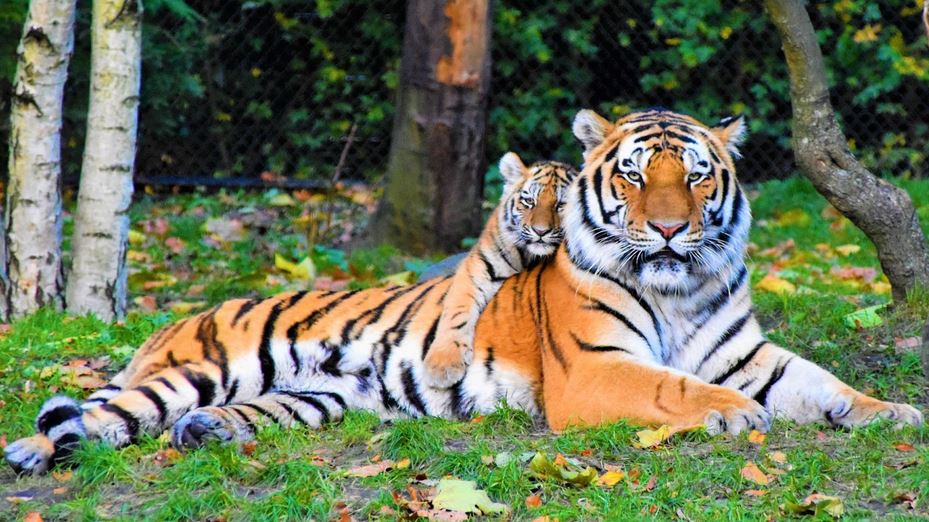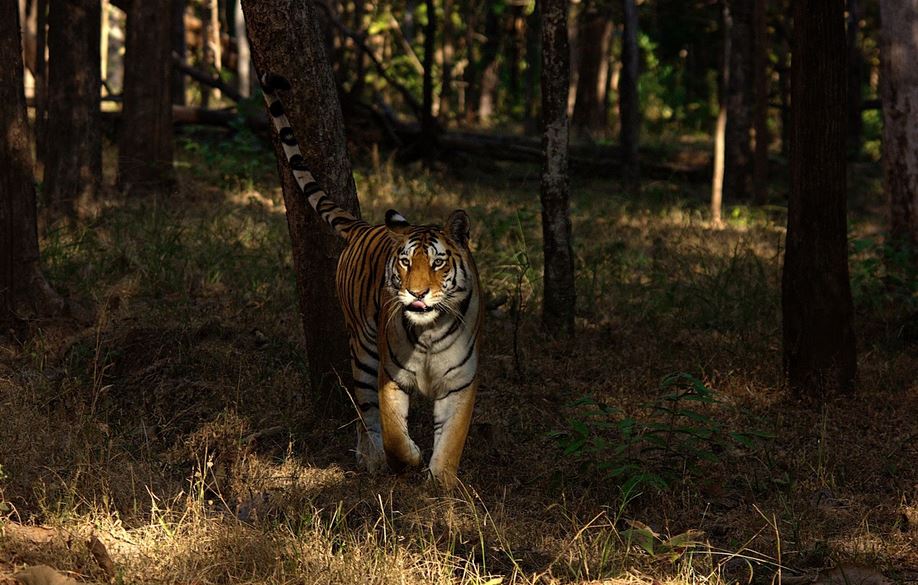What is your favorite place to connect with nature? Picture yourself in the heart of a vast and ancient jungle, surrounded by towering huge trees holding untold past secrets. The air is thick with nature's beauty, and the sounds of wildlife create a melody of life. A faraway roar sends shivers down your spine and is a reminder of the regal presence of the tiger, known as the 'king of the jungle.' This has become a rare scene these days. Today, the sounds of devastation drown out the echoes of their once-powerful dominion. This is the story of the tigers-a tale of struggle, resilience, and hope in the face of an ongoing attack on their 'Homes'.
The numbers are alarming: recent research studies have revealed alarming statistics about the current state of tiger populations in the wild. These majestic animals were once abundant, with an estimated 100,000 tigers roaming the planet in the early 1900s. Only about 4,000 are currently found in the wild, indicating a sharp decline in their population. These tigers are spread across just 13 countries, with India being home to most of them. India currently houses around 3,200 tigers, while other countries like Bangladesh, Nepal, and Bhutan struggle to maintain viable tiger habitats.
The main causes of the decline in tiger numbers are widespread deforestation and poaching for the illicit wildlife trade. Forests are disappearing at an alarming rate as human populations keep increasing and moving into places that were formerly tiger habitats. This is leading to habitat loss for tigers and other wildlife, which in turn is driving down their populations. Poaching for the illegal wildlife trade is also a significant problem, with tiger parts being highly valued in some cultures for their supposed medicinal properties. It is important to note that no scientific evidence supports the medicinal claims attributed to tiger parts. Still, this demand drives illegal poaching, putting tigers at even greater risk and pushing them further towards endangerment.
Photo credit to Pexels, "Photo of Tiger and Cub Lying Down on Grass" by Waldemar, used under CC0 license
Guardians to be mobilized in school enrollment campaign

Captive tigers in the United States represent a complex and concerning aspect of the global tiger conservation landscape. The US is estimated to have one of the largest populations of captive tigers worldwide, with approximately 10,000 tigers residing in various facilities, including zoos, sanctuaries, circuses, and private ownership. These captive tigers come from different backgrounds, including captive breeding programs, rescues from illegal wildlife trade, and those previously kept as exotic pets.
While some accredited zoos and sanctuaries prioritize the well-being and conservation of their tigers, others face criticism for inadequate living conditions (a single tiger in nature needs a habitat as big as 150 square kilometers or 37,000 acres), improper care, and the use of tigers for entertainment purposes. They are downgraded to selfie prop rather than actual wildlife. The issue of private ownership of tigers also presents challenges, as the laws and regulations surrounding tiger ownership vary from state to state, resulting in a lack of uniform standards for their welfare. Additionally, the presence of captive tigers poses potential risks to public safety. Regardless of being captive-born, tigers retain their wild instincts, and there have been instances of escapes or attacks in the past. These incidents highlight the importance of responsible ownership and management practices for captive tigers.
Global conservation efforts have intensified in response to the alarming decline of wild tiger populations. The Tiger Range Countries (TRCs) adopted a Global Tiger Recovery Program (GTRP 2010) together with organizations like the World Wildlife Fund (WWF) and the Global Tiger Forum (GTF), which are spearheading ambitious conservation initiatives. These efforts aim to protect and connect tiger habitats, implement anti-poaching measures, and engage local communities in tiger conservation. The 13 TRCs had set a bold target known as "Tx2," committing to doubling the global tiger numbers by 2022, and it was successfully achieved due to the political support, funding, collaboration, and innovation given to tigers.
In addition, several countries have launched their own conservation efforts to protect tigers and their habitats. For example, India has implemented a successful program called Project Tiger, which has helped increase the country's tiger population from around 1,400 in 2006 to over 2,900 in 2019. Under the project, tiger reserves are established in areas with high tiger density and suitable habitats. These reserves ensure the tigers have adequate prey, water, and shelter. The reserves are also patrolled to prevent poaching and other illegal activities. One of the key features of Project Tiger is community involvement. Local communities living around the tiger reserves are encouraged to participate in conservation efforts and benefit from the presence of tigers.
Collarwali Tigress of Pench Tiger Reserve in India, this year's TX2 Award winner for doubling their population of wild tigers.
(Photo credits to Nconnet, used under CC BY-SA 4.0)
Why protect Tigers?
Conserving tiger populations and their habitats involves preserving large areas of intact wilderness. Protecting these habitats benefits countless other species that share the same ecosystem. Moreover, forests act as rivers' origin and absorb carbon dioxide. Helping combat global warming, regulate water flow, and offer clean water sources for wildlife and human communities. Protecting tigers safeguards these vital ecological functions, benefiting entire ecosystems and human civilization. Tigers are like protective umbrellas for all.
In this tale of tigers, we witness their incredible journey from historical glory to the edge of extinction. Now, it is up to us to script the next chapter. Together, let us embrace the challenge, raise our voices, and take bold strides toward securing a future where the tiger's roar resounds through the forests, echoing triumphantly across the ages. Let the journey to safeguard the kingdom of the tiger be etched in our hearts as we unite under the banner of conservation, guided by organizations like BioDB, to secure a future where tigers roam free, embodying the untamed spirit of nature's true royalty. Together, we hold the key to turning the tide, rekindling hope, and ensuring that the legacy of these awe-inspiring creatures endures, flourishing in the wilderness they call home.
"When we save the tiger, we save the forest. When we save the forest, we save all the species that live in it, including ourselves." - Steve Irwin
The author is the Founder & CEO of BioDB.com - a group tasked with collecting conservation data, raising awareness for biodiversity loss and fundraising.




-1200x560_20220209150522.jpg)




































